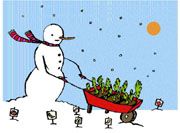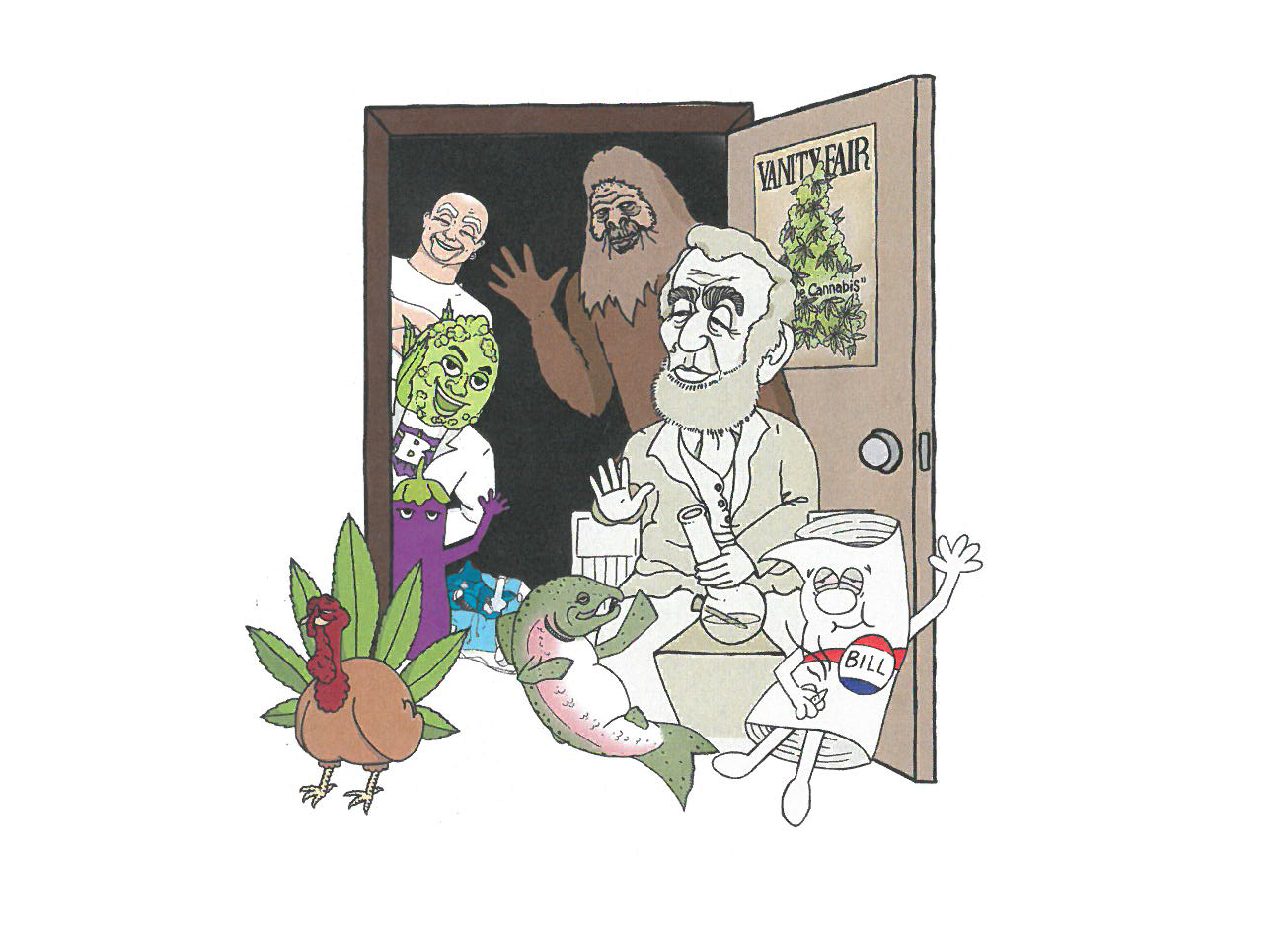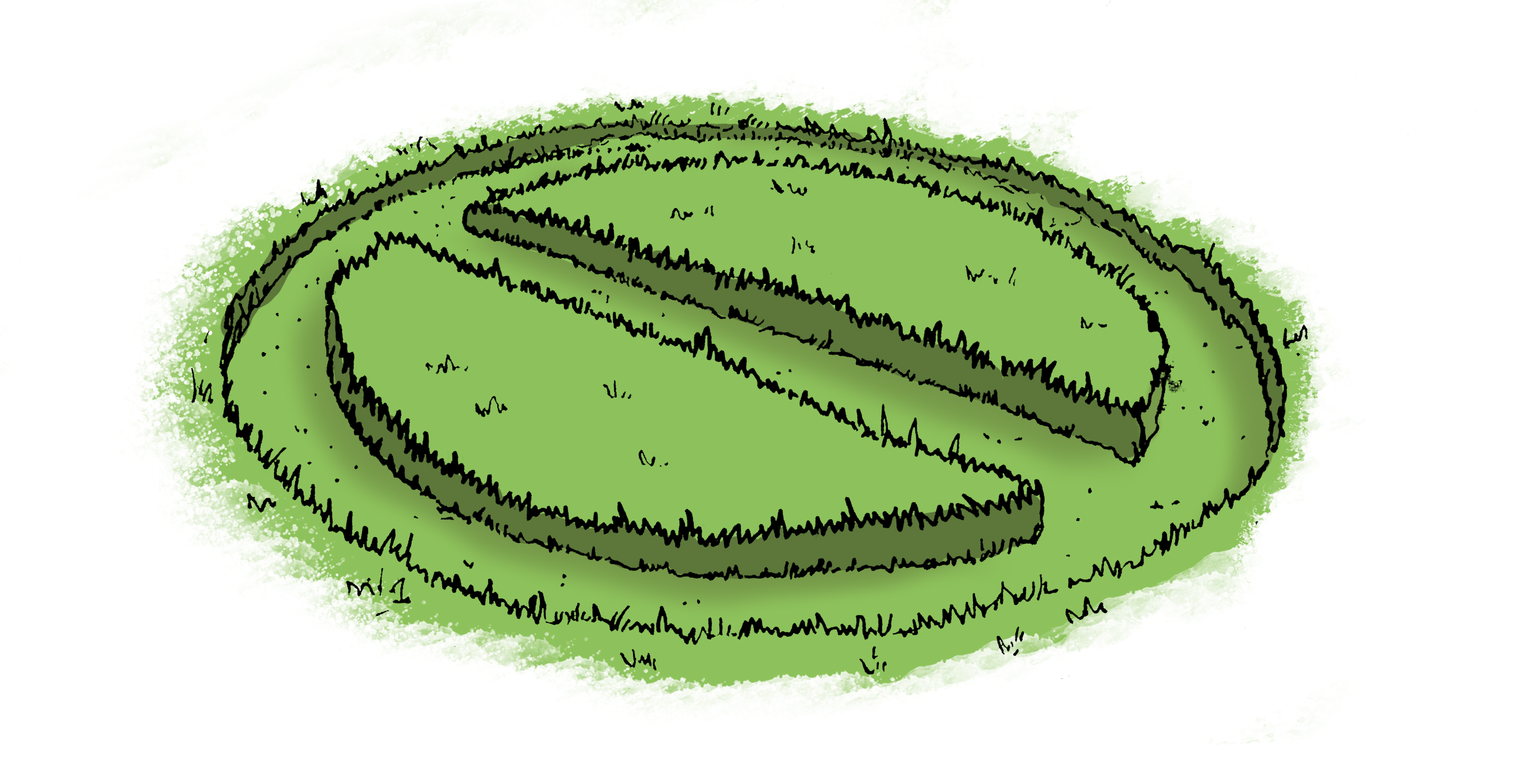“The best thing about gardening is that if you put it off long enough, it won’t be necessary.”
—ANCIENT PROVERB
Historically, gardening has been an arduous act of manual labor: trying to eke a potato out of the dirt, coaxing onions from the tundra, or tending to the withering grapes of wrath. The homesteader, without a bountiful harvest to feed the hungry mobs, made do with week-old bread and manure tea for supper. Today, the concept of “living off the land” is a truism only for real estate agents and timber barons. We’re not exactly a land-to-mouth society these days, what with horticulture now a leisure industry, Martha Stewart a billionaire, and Pottery Barn a swank place to go shopping.
According to recent Census Bureau stats, though, about seven out of 10 US households have some sort of homestead, ranging from apart- ment window boxes to P-patches to big-ass lawns (the unidentifiable green fungus in one’s refrigerator was classified as “other”). Every bungalow in Green Lake has sunflowers in its yard, a Wallingford home is nothing without the obligatory herb garden, and Fremont’s so full of carp ponds, they’re considering throwing a Carp Parade. On Capitol Hill it’s feng-shui fever, Goth gardens, and harvesting based on the phases of the moon. In West Seattle, we’re growing cannabis.
The ability to get a little patch of land with your fixer-upper is one of the main attractions of living in the Pacific Northwest. In New York, you’re lucky to have a fire escape on which to grow tomatoes; in LA, the constant drought makes tilling the soil damn near impossible (though many parts of the cactus are edible).
When I first began looking for my own home, a yard was the last thing on my wish list (a view was first, hot tub second, wet bar third, and so on). Unfortunately for me, the West Seattle house I eventually purchased included a backyard the size of Texas. Mostly mud, thicket, and lawn, the lot also included several badly manicured beds and a rose garden requiring constant maintenance.
Had I not adamantly proclaimed myself to be an environmentalist to anyone who’d listen, I’d have paved the lot and laid down a b-ball court. Instead, I began to spend my weekends not sleeping or sailing, but on my hands and knees. With the help of my girlfriend, I slowly grew an affinity for the torment. I was amazed as giant lilies bloomed, organic salads appeared, and my lawn transformed into a colorful oasis. An added bonus: The vegetation blocked out the neighbors.
Gardening is also therapeutic on many levels. I now take out my road rage with a pitchfork in the compost pile. A recent study by the American Heart Association listed floriculture right after walking as one of their “life-savers” for individuals over 40 (then again, they’re the same ones who suggest red wine in the morning). In addition to aiding the pump, the act of digging in the dirt puts a person in touch with planet earth—literally. This process of smelling the roses, for some, is relaxing, contemplative, even spiritual. Noticing the delicate balance of nature may also make citizens greener on the inside (hopefully turning them into Democrats and environmentalists).
To every season, turn, turn, turn. Another reason people take up gardening is as a seasonal activity. Like sunbathing or collecting convertibles, you do it for a while, get burned out, then head inside until spring comes back around. There are flowerpot fanatics, rose enthusiasts, and folks who use the warm weather to repaint their trolls or chain saw a few more wooden Smokeys for the front porch.
Inspired by the Olympic trials, I decided to go all out in the garden this summer. My goal was to push myself to the limit, drive hard to the fall finish line, then revel in my rural accomplishments. While weed-whacking, I began brainstorming alternative hobbies that would fill 40 hours I currently spend deadheading: needlepoint, stamp collecting, perhaps collage, or a correspondent course in economics. Sipping hot cocoa, I’d huddle with my sweetie under an afghan the size of a woolly mammoth and stare at the roaring fire.
Before wrapping things up for winter, I decided to pay a visit to the West Seattle Nursery to ask a few questions. Being a greenhorn green thumb, I wanted to make sure I did everything correctly before the gardening gig was over.
“Over! It’s never over!” shouted Meghan Shepard, sounding more like Bluto from Animal House than Ed Hume. “No, no, here in the Northwest we can garden year-round. There’s always something to do.” I felt my back spasm. “In fact, this is one of the only places in the country you can winter garden. It’s fantastic!” Sure, if you want to spend the days of winter eating garlic, cabbage, and parsnip soup! “Of course, these croppings do bring a whole new set of weeds. Chickweed! Grasses! Mallow!” It was looking less and less likely that my winter wonderland would entail hibernating with Harry Potter.
The sprouting drill sergeant went on: “Yep, all sorts of things to do! Clean up all that crap in the yard, then MULCH! Set bait! Slugs know no seasons, nor do mites, moles, and fungi! There are seeds to order and new plots to plan. Gotta think about bloom sequence, leaf texture, height variations, and companion planting. What colors do you want in each season?” I was thinking about what color a winter-long nap might look like.
“Not only that,” she went on, full of breath, “but you’ll want to bring ‘tender’ perennials like chocolate cosmos and fancy-leafed geraniums inside to sit next to your kayak.” What was I, a hospice for wimpy plants?
At least all the bulbs I’d planted would come back without any work on my part, I suggested.
“Nope. Best thing to do with tender bulbs—canna, tulips, gladiolus—is dig ’em up, dry ’em out, then dust ’em with sulfur or bulb saver, pack ’em in peat moss, and store them in a cool dry place.” Repeat until crazy.
“Real gardeners never quit! Read Ann Lovejoy’s The Garden in Bloom. [I prefer The 20 Minute Gardener, by Tom Christopher.] Oh, the Arboretum is gorgeous in February, with the light coming through the winter blooms!” All right, shuddup already!
It’s not what I wanted to hear. I wanted talk about how true gardeners take this time to fatten up for the next go-round. Turns out gardening for the austere is not simply a hobby, like board games or golf, that you can put away when you’re done with it. In fact, a closer analogy is raising children; once you’ve laid the seed, you can forget about other activities like hiking or eating lunch—you’ll be tethered to the terrain.
So the work continues; year-round, apparently. My eight-month hiatus is really a three-day window around the winter solstice—hopefully coinciding with the Super Bowl.
The good news: Pretty soon it’ll be pitch dark by 2pm. Even rising at the crack of dawn, there’ll only be time for about six hours of back-breaking labor. And there is one item master gardeners like Meghan and I agree on: No one’s going to have to worry about watering for the next eight months.








